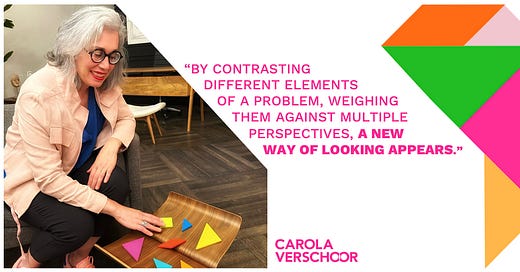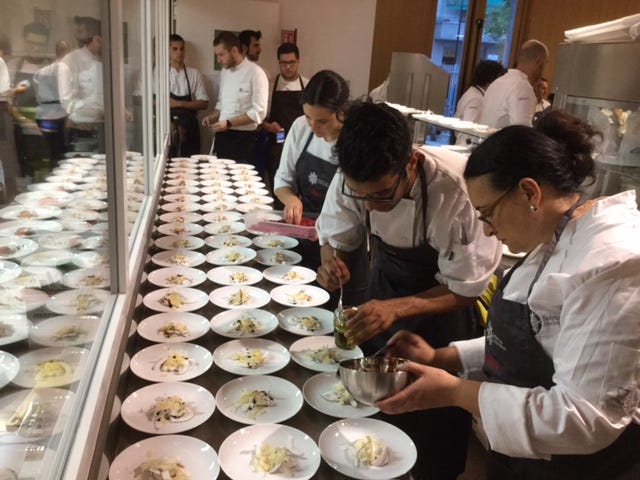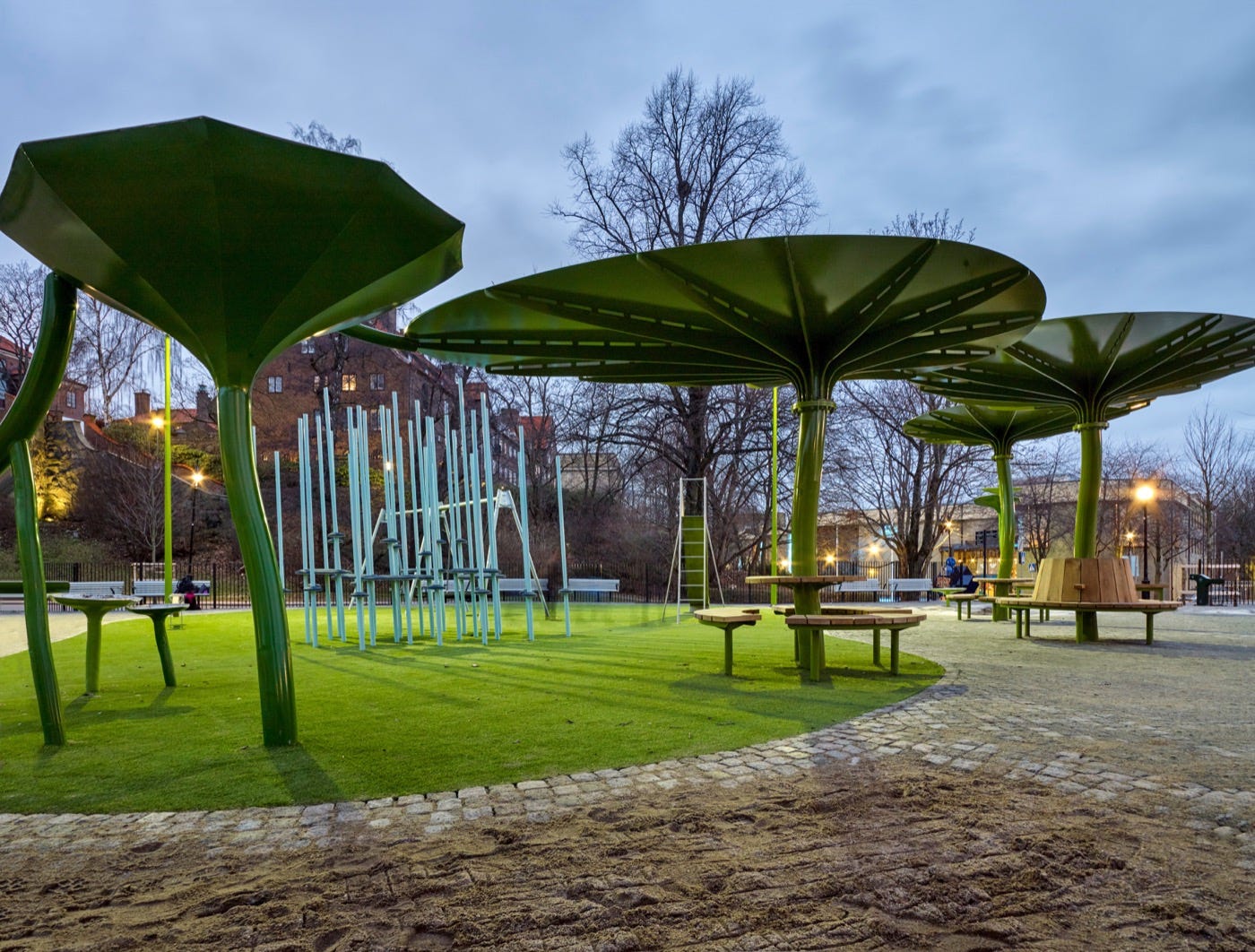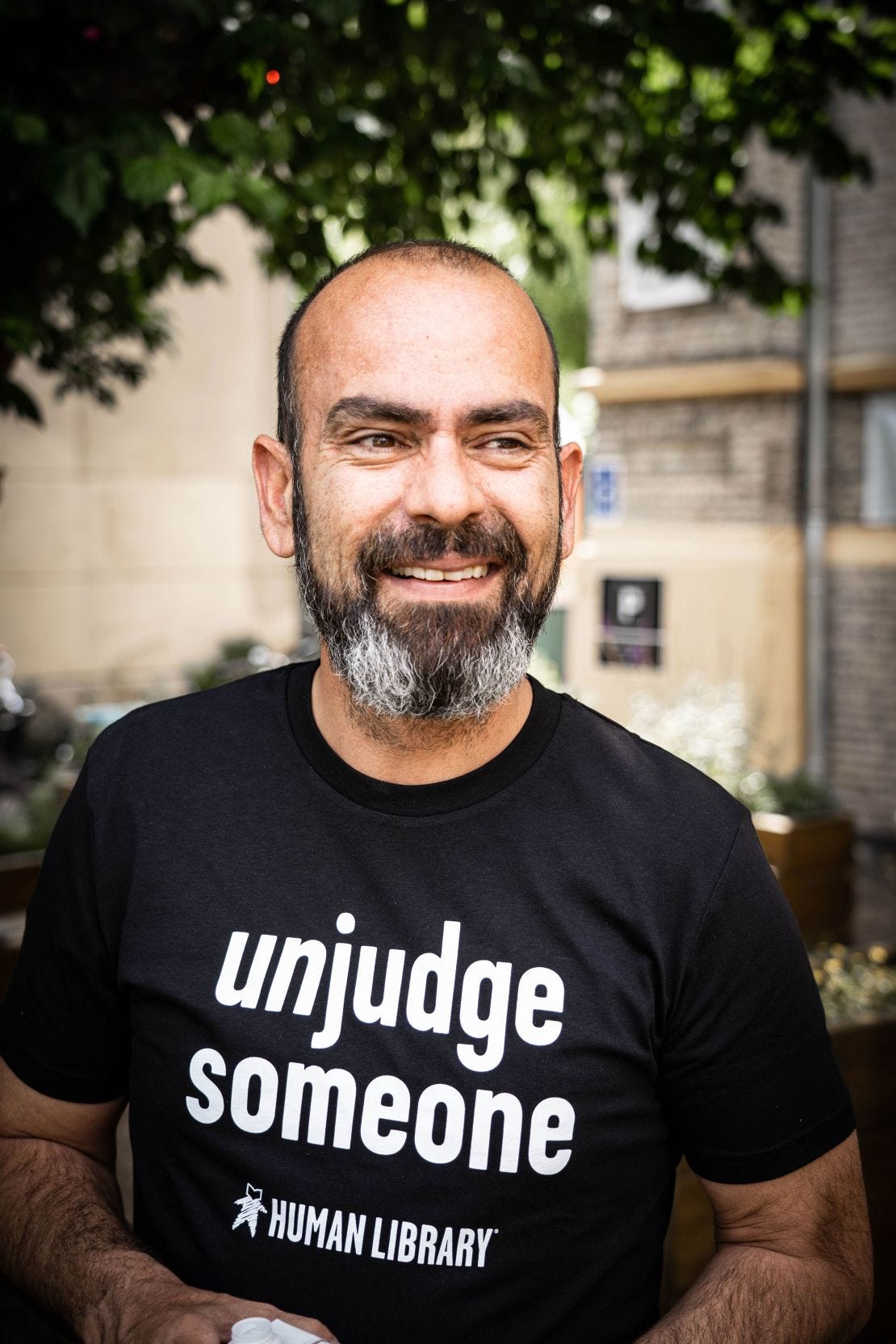Reframing: a.k.a. multiple ways of seeing
👀 Noticing is at the core of transformation. How do you look at things? What do you see? We create meaning from how we interpret our context. Transforming our views uncovers limitless possibilities.
TL;DR
Reframing in design involves viewing problems from different perspectives to uncover insights and solutions. By shifting context, designers can challenge assumptions and explore alternatives, leading to innovative strategies. Here are examples of how challenging the convention through new ways of seeing can lead to suprising, relevant and refreshing new ways of doing and being in the world.
Reframing: contrast and perspective
Reframing in design refers to the process of viewing a problem or challenge from different perspectives to generate new insights and solutions. It involves shifting the context or the way a problem is defined. In many directions and multiple ways. The idea is that if we just accept the problem as “the way things are” we may not be looking at the actual issue, rather simply experiencing its symptoms
So how to get to the heart of the matter? By changing the frame of reference, designers seek to uncover underlying assumptions, explore alternative possibilities, and ultimately create more effective and more desirable designs.
By contrasting different elements of the problem, weighing them against multiple perspectives, a new way of looking appears. A different frame to contain the totality of multiple voices in the ongoing dialogue and dynamic stream of change.
Our world is in a constant state of transformation, and with this evolution comes the imperative to tackle today’s intricate challenges with foresight and a design mindset. We must grasp the dynamics of their shifting environment but also to envision bold, alternative futures. Through reframing we can create sustainable strategies that guide us in our common journey from our current reality to a new and preferable future. When we lead with courage and creativity, together we forge pathways to a brighter tomorrow.
Impact inspires
Impactful solutions can serve as catalysts for (social) change. When we experience these solutions, true understanding arises through the visceral., embodied sense that emerges. We inspire one another: engaging in possible futures by seeing that if something can work in one domain by changing the shape and structure of the fundamental way of thinking that sustains it… then more change can take place. The ripple of change, the sense of possibility, the bias to action… all show us that shaping our future is a collective endeavor. By showing possibility, we unleash potential.
Got examples?
The idea of reframing is great. But what does it look like? Here are three examples that inspire and can create a ripple of transformation.
Food surplus and the Refettorio Ambrosiano
Chef Massimo Bottura asks the daring question: What if food waste could feed the hungry? The answer is: let’s look at it differently. Let food waste become food surplus. Calling it “waste” accepts the premise that it goes to waste. Reframing it as “surplus” allows us to see that it is available food looking for people to feed. That there is excess production and poorly designed distribution systems which get in the way of bringing food to those who need it.
Refettorio Ambrosiano is a social table in Milano. In this Time Magazine article you can read more about it: “At Refettorio Ambrosiano, dinner guests are greeted by name. They dine on fine china at tables created by the country’s most sought—after furniture designers, under works of art that would not be out of place in a contemporary art museum. The waiters are courteous, and the chefs have trained under the finest restaurateurs in the world. The set menu changes daily, depending on what comes in with the morning’s delivery.”
Photo: ©Chiesa di Milano
Regnlekplatsen, The Rain Playground
Visiting the outdoors in rainy places is often seen as a challenge as we see “bad” weather, as… “bad”. But is it really, or are these just different weather conditions that require us to adapt and invite us to be playful? Isn’t a different kind of weather an opportunity for a different kind of playing?
The Swedish city of Gothenburg commissioned a playground which would have playful functions even when it rained. And that is quite often the case in Gothenburg! This article highlights how shifting the design principles to think with water instead of against water: delivered an incredibly beautiful and interactive park to its citizens. The result is that people look forward to rainy days as an opportunity to go out and experience play in a playground that’s even more fun to visit when it’s raining. In it, you can jump into puddles, climb on the playground structures and take shelter under leaf-shaped umbrellas. Gothenburg has humanised the joys of rainfall, while also finding creative and beautiful ways to manage rainfall in a sustainable manner.
Photo: ©02Landskap
The Human Library: borrow a person instead of a book
In the midst of a loneliness pandemic, this reframe is very relevant. Polarisation, exclusion, distancing and so many issues arise from judging too harshly or too quickly. At the Human Library, the idea is that real people carry real stories, and that stereotypes and prejudice melt away when we can connect through our lived stories. As you can read here: “Every “human book” from this library represents a group that faces prejudice or stigmas because of their lifestyle, ethnicity, beliefs, or disability. A human book can be an alcoholic, for example, or a Muslim, or a homeless person, or someone who was sexually abused.” What might our world look like through the reframe of “unjudgement”? It is inspiring to think about how we might connect, relate and build a society where we ‘don’t judge books by their covers.’ This concept already has 80 libraries in cities across the world.
Photo: ©The Human Library
“If you change the way you look at things…
…the things you look at, change”, are the often quoted words of Wayne Dyer. And so it is. Reframing allows us to shift our worldview, and perhaps by doing so we can design for a better, kinder and more prosperous world. We need visionaries, transformers, and people of all walks of life to show us what else is possible when we let go of the frames of old.
A sense of wonder, an unquenchable thirst for alternatives, a child-like curiosity, a continuous questioning and sensing: What if…? will all help us open the field of possibility and potential. A liminal space where new ways of being in the world can be developed. Precisely the space in which transformation thrives.








